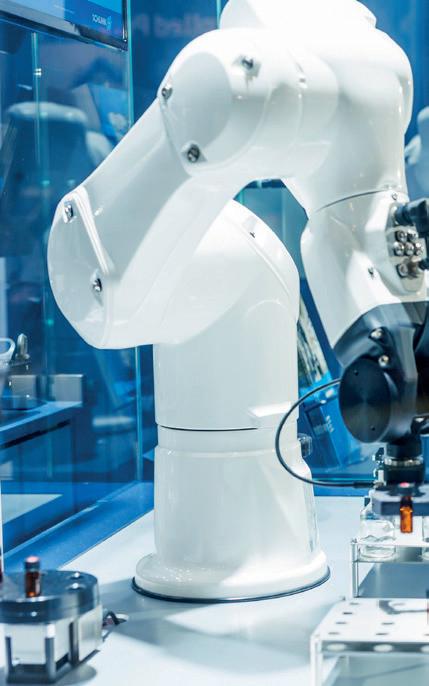2 minute read
Cost-effective & timely micron-precision moulding
Next Article
When locating a specialist micro moulder, it is important to find one with not just the wherewithal to achieve exacting micron tolerances, but one that has expertise at the design, tooling, manufacture, assembly, validation, and measurement stages of the micro product and component development process. This will ensure that the requirement for lengthy and costly design reiterations will be minimised, and so micron tolerances can be achieved cost-effectively and in a timely fashion.
It is vital that micro moulders have the business culture, personnel, and equipment in place to provide the service necessary to ensure a successful project outcome. Micro moulding for OEMs from a variety of industry sectors requires the ability to cater for low, medium, and high volume runs in a variety of different materials, all requiring different levels of validation. Micro moulders must also have expertise in handling, storing, and processing often extremely expensive and sensitive materials that in many instances will be used in safety critical applications.
The transition from injection moulding machines that can effectively produce “small” parts, and machines that can produce “micro” parts and features is important, and micro moulders must be able to utilise state-ofthe-art equipment designed for exacting micro applications.
The necessity for the degree of control and repeatability needed in micro manufacturing requires the moulding press to be equipped for such precision. Traditional machines tend to struggle to maintain accuracy the smaller the part dimensions often adding additional processing struggles. So, saying, micro injection moulding machines — which may be manufacturing parts with weights less than 0.005g — can not only handle much smaller geometries and tolerances, but have a positive effect on material usage, residence time, and consequent material degradation common on larger presses.
Micro Tools
It is in tooling for micro moulded parts that time and money can be wasted if the micro moulder does not have the expertise required. Tooling for micro moulding projects does not require an extrapolation of the rules governing tooling in traditional injection moulding. Features in micro moulded parts often exceed the allowable tolerances in traditional injection moulding, and similar issues are confronted in the areas of venting and tooling mismatch. Micro moulders must be able to employ an array of moulding technologies, including the latest CNC machining technologies, and — as is often required — EDM.
Other tooling issues specific to micro moulding are requirements for an understanding of polishing for micro-mould cavities, and the heating and cooling implications when dealing with extremely thin steel inserts that can be negatively affected by temperatures involved in many moulding applications. In addition, as many micro moulding applications use high temperature, high performance materials, such as bio-resorbables, liquid crystal polymers, and PEEK, it is necessary to use and understand the nature of tooling materials such as stainless steel rather than traditional tool steels which may not be able to withstand the high temperatures necessary and can corrode.
Process Considerations
Process parameters in micro moulding are different in many ways from traditional injection moulding, but key is an understanding of the balance between melt temperature, injection pressure, and injection velocity and their effect on dimensional accuracy. Also, attention must be focused on micro moulds that in many instances require mould alignment to less than 5 microns, and with gate diameters that are typically anything from 60 to 200 microns. Proper venting and runner design are critical steps for the process to be as efficient as possible.
Due to the often critical nature of some micro moulded parts and products, it is often necessary to manufacture under cleanroom conditions. With extremely exacting quality and traceability systems, complete control of the entire manufacturing process is required,











